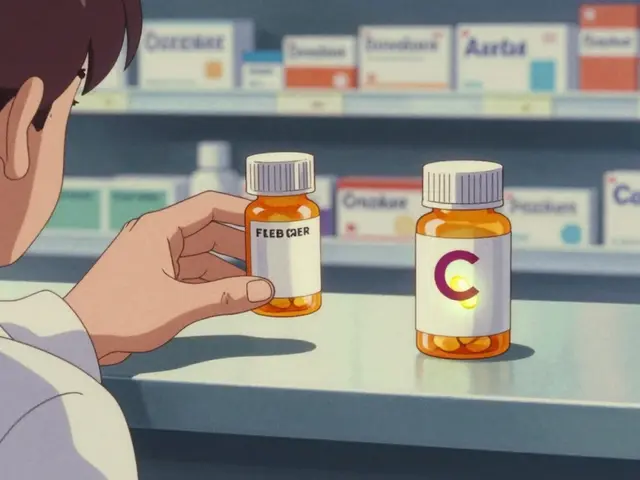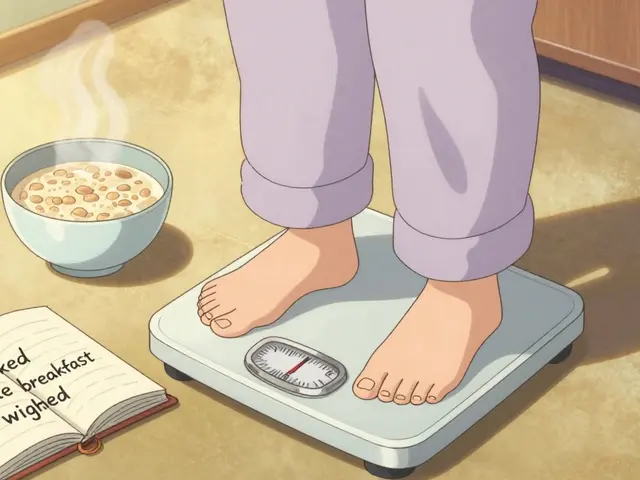Before 1967, Parkinson’s disease had no medicine that could reliably give people back their movement. Today, one combo-carbidopa‑levodopa-anchors care around the world. This story isn’t just a list of dates; it’s how a basic science insight turned into a therapy that reshaped daily life. I’ll give you a clean timeline, explain why the combo mattered, show how formulations evolved, and close with practical takeaways and quick answers. I’m writing this from Seattle, where I’ve watched this medicine ripple through clinics and homes alike.
- Levodopa restores brain dopamine; carbidopa makes levodopa tolerable and more efficient by blocking peripheral breakdown.
- Key milestones: 1957 (dopamine’s role), 1967 (oral levodopa breakthrough), 1975 (Sinemet approval), 1991 (CR), 2015 (Rytary & Duopa), 2018 (Inbrija).
- The combination slashed required levodopa doses and nausea, enabled long‑term use, and set the stage for modern Parkinson’s care.
- Motor fluctuations and dyskinesias emerged with long use; newer delivery systems aim to smooth dopamine levels.
- Rule of thumb: ensure ≥75-100 mg/day carbidopa; time doses away from high‑protein meals; adjust form (IR/ER/gel/inhaled) to match OFF periods.
The timeline: from early dopamine clues to modern delivery (1817-2025)
1817: James Parkinson described the “shaking palsy,” mapping the clinical syndrome before we knew anything about dopamine. That set the clinical target. Mid‑20th century science found the lever to pull.
1957: Arvid Carlsson showed dopamine is a neurotransmitter critical for movement. This was the conceptual spark. He later received the Nobel Prize in 2000 for this body of work.
1960: Oleh Hornykiewicz and colleagues found severe dopamine loss in the striatum of Parkinson’s brains. The deficit was clear; now the question was how to replace it.
1961: Walter Birkmayer and Hornykiewicz reported short‑term IV L‑dopa improved rigidity and akinesia. The effect was dramatic but brief-promising, yet impractical.
1967: George Cotzias in the New England Journal of Medicine described careful oral titration of levodopa to high doses with remarkable, sustained improvements in movement. This turned levodopa from a lab curiosity into a usable medicine.
1970: FDA approval of levodopa monotherapy in the United States. It worked, but high doses caused nausea, vomiting, and heart effects because levodopa was being converted to dopamine in the body before it reached the brain.
Early 1970s: Merck developed carbidopa (then called MK‑486), a peripheral aromatic L‑amino acid decarboxylase inhibitor. It blocks conversion of levodopa to dopamine outside the brain, cutting side effects and letting more levodopa cross the blood-brain barrier.
1975: FDA approval of the fixed‑dose combination carbidopa/levodopa (brand Sinemet). Doses dropped, nausea fell, and daily function climbed. This is the modern starting point for many patients.
1980s: As people stayed on the drug longer, two issues became common: “wearing‑off” (medication working for shorter periods) and dyskinesias (involuntary movements). This pushed the field toward steadier delivery and adjunct drugs.
1991: Controlled‑release (CR) tablets of carbidopa/levodopa arrived. They extended dosing intervals for some people, especially for nighttime symptoms, but didn’t fully prevent fluctuations.
Late 1990s-2000s: COMT inhibitors (like entacapone) and MAO‑B inhibitors (like selegiline, then rasagiline) were used to boost or smooth levodopa effects. Deep brain stimulation earned approvals for advanced disease when meds alone weren’t enough.
2004: Orally disintegrating carbidopa/levodopa (Parcopa) made dosing possible without water and helped with delayed gastric emptying. Same drug, faster dissolve.
2015: Extended‑release bead capsules (Rytary) landed in the U.S., designed to smooth peaks and extend benefit beyond immediate‑release. The same year, the FDA approved carbidopa/levodopa intestinal gel (Duopa) via a PEG‑J tube for continuous daytime infusion in advanced disease.
2018: Inhaled levodopa powder (Inbrija) was approved for rapid rescue of OFF episodes. Not a daily replacement, but a fast on‑demand option.
2020s: More attention to continuous dopaminergic delivery, personalized dosing (including micro‑tablet tech in some regions), and smarter combinations with wearable OFF detection. The goal is the same as 1967: keep dopamine steady enough for a steady day.
| Year | Milestone | Why it mattered |
|---|---|---|
| 1817 | James Parkinson’s clinical description | Defined the syndrome and what success would look like. |
| 1957 | Carlsson shows dopamine’s motor role | Identified the neurotransmitter target for therapy. |
| 1960 | Hornykiewicz finds dopamine deficit in PD brain | Explained symptoms; pointed to dopamine replacement. |
| 1961 | IV L‑dopa improves symptoms | Proof‑of‑concept that dopamine replacement works. |
| 1967 | Cotzias oral titration of L‑dopa | Practical, sustained benefit using oral dosing. |
| 1970 | Levodopa monotherapy approved (US) | First widely available dopamine replacement. |
| 1975 | Carbidopa/levodopa (Sinemet) approved | Lower doses, better tolerability, better brain delivery. |
| 1991 | Controlled‑release tablets (CR) | Longer dosing intervals; partial smoothing of response. |
| 2004 | Orally disintegrating tablets (ODT) | Easier dosing; helps when swallowing is hard or delayed. |
| 2015 | Rytary ER bead capsules | More stable plasma levels; longer duration per dose. |
| 2015 | Duopa intestinal gel | Continuous infusion for advanced fluctuations. |
| 2018 | Inbrija inhaled powder | Rapid rescue for sudden OFF episodes. |
How to use this timeline fast:
- Find the decade your question lives in (discovery, combo, or delivery).
- Map the problem being solved (tolerability, fluctuations, or rescue).
- Match a formulation to the problem (IR for predictability, ER/gel for smoothing, inhaled for rescue).
- Check the trade‑off (onset speed vs duration vs convenience).
- Note what’s evidence‑based vs what’s a workaround.
Quick vignette snapshots: In 1975, a 58‑year‑old mechanic goes from shuffling to walking within weeks of starting Sinemet. In the 1990s, a teacher uses CR at bedtime to control early‑morning rigidity. In 2018, a software engineer keeps an inhaler at the desk for sudden OFFs between meetings. The medicine evolves, but the goal-steady days-stays the same.

Why the combo changed everything: science, dosing rules, and formulations
Levodopa is a dopamine precursor. It crosses the blood-brain barrier and becomes dopamine in the brain. The snag is that the body also turns it into dopamine outside the brain, which causes nausea, vomiting, low blood pressure, and arrhythmias-and wastes the dose before it reaches neurons.
Carbidopa solves that. It inhibits the peripheral enzyme (aromatic L‑amino acid decarboxylase) that turns levodopa into dopamine in the gut and bloodstream. It barely enters the brain, so central conversion is preserved. Together, you get more levodopa into the brain with far fewer side effects, often at a fraction of the dose used before 1975.
Practical dosing rules most clinicians use today:
- Aim for at least 75-100 mg/day of carbidopa to adequately block peripheral conversion. Many people land around 75-200 mg/day total carbidopa depending on their levodopa schedule.
- Standard starting combo: 25/100 mg (carbidopa/levodopa) immediate‑release, 3 times a day with careful titration. Adjust to symptoms-not just the clock.
- Take doses 30-60 minutes before meals or with a light, low‑protein snack. Large protein loads compete with levodopa for transport into the brain and can blunt the effect.
- If nausea persists early on, adding extra carbidopa (25 mg) with each dose can help. Some regions use domperidone as an antiemetic; in the U.S., discuss options and risks with a clinician.
- For early‑morning OFF, a bedtime CR or an early pre‑breakfast IR dose can help. For sudden OFFs, an on‑demand option (inhaled levodopa) can be added.
Formulations at a glance and how we got them:
- Immediate‑release tablets (Sinemet and generics): Fast onset, short duration. Most predictable for titration. Baseline workhorse since 1975.
- Controlled‑release tablets (CR): Slower onset, longer duration. Useful at night or when frequent dosing is hard. Less reliable onset for some people.
- Extended‑release bead capsules (Rytary): Designed to combine quick onset with longer tails. Fewer daily doses for many users, though dose conversion from IR isn’t one‑for‑one.
- Orally disintegrating tablets (ODT, e.g., Parcopa): No water needed; helpful with delayed gastric emptying. Same pharmacology as IR once swallowed.
- Intestinal gel (Duopa): Continuous daytime infusion straight to the small intestine through a PEG‑J tube. This tackles the root of wearing‑off by flattening peaks and valleys.
- Inhaled levodopa (Inbrija): Rapid rescue for OFF within minutes. Not a replacement for scheduled dosing; think of it like a fire extinguisher, not central heating.
Outside the U.S., benserazide (in the combo “Madopar”) is used instead of carbidopa with similar logic-block peripheral conversion to make levodopa more efficient. The choice often depends on country availability, not a huge difference in mechanism.
What evidence locked these in? Cotzias’s 1967 NEJM paper established the oral titration approach. Levodopa monotherapy approvals followed in 1970. The 1975 fixed‑dose approval reflected consistent data that carbidopa reduced side effects and allowed lower levodopa doses. Later, trials of controlled‑release, extended‑release, and intestinal gel showed improved “good ON” time and less OFF compared with immediate‑release alone for selected patients. Large pragmatic studies like PD MED (Lancet, 2014) suggested levodopa‑first strategies gave better quality‑of‑life scores than dopamine agonists or MAO‑B inhibitors as initial therapy in many cases, which reinforced the central role of the combo.
Common pitfalls and fixes:
- “It stopped working.” Often it’s wearing‑off or delayed stomach emptying. Try taking IR 30 minutes before food; consider an ODT; review protein timing; discuss ER or gel options.
- Dyskinesias after years of use. Usually tied to disease progression and pulsatile delivery, not “toxicity.” Lower single doses, add amantadine, consider ER or continuous delivery, or evaluate for DBS.
- Nausea early in treatment. Add carbidopa, adjust timing, or use a non‑dopaminergic antiemetic under guidance. Avoid metoclopramide or prochlorperazine-they block dopamine and can worsen symptoms.
- Nighttime rigidity or painful dystonia. A CR at bedtime or carefully timed ER dose can help; some use a small IR dose at night if they wake up stiff.

What this history means for care now: patterns, debates, and quick answers
The biggest myth that lingered for years was “save levodopa for later.” Multiple studies counter that-people often do better in day‑to‑day life starting with levodopa when symptoms affect function, then layering other meds or delivery methods as needed. The ELLDOPA trial (NEJM, 2004) worried some about potential disease modification signals, but the weight of later data and clinical experience brought the field back to function‑first, patient‑first decisions.
Expectations help: levodopa doesn’t “burn out.” The disease progresses, and the drug’s dosing needs change. Wearing‑off, freezing, and dyskinesias are common after years, but they’re usually manageable with smarter delivery (ER, gel), add‑ons (COMT or MAO‑B inhibitors, amantadine), or device therapy (DBS) when needed.
A simple rule of thumb I keep in mind: match the formulation to the problem. Need fast ON? Immediate‑release or inhaled rescue. Need fewer rollercoasters? Extended‑release or intestinal gel. Need overnight coverage? Controlled‑release at bedtime. Need precision? Consider micro‑dosing approaches where available and use careful diaries or wearable data.
Quick‑reference cheat sheet: key dates and facts
- 1967: Oral levodopa titration proves durable benefit (Cotzias, NEJM).
- 1970: Levodopa approved in the U.S.
- 1975: Sinemet (carbidopa/levodopa) approved-tolerability leaps forward.
- 1991: Controlled‑release tablets approved.
- 2015: Rytary ER beads and Duopa intestinal gel approved (U.S.).
- 2018: Inbrija inhaled levodopa approved.
- Target daily carbidopa: ≥75-100 mg to reduce nausea and boost levodopa delivery.
- Protein can blunt effect-separate doses from high‑protein meals.
FAQ
- carbidopa-levodopa history in one line? Dopamine discovery (1957) → levodopa success (1967) → carbidopa combo (1975) → new delivery to smooth dopamine (1991-2018).
- Why add carbidopa? It blocks peripheral conversion, cuts nausea, and lets more levodopa reach the brain, so you need lower doses.
- When was Sinemet approved? 1975 in the U.S.
- Is benserazide the same as carbidopa? Same idea, different molecule, used in some countries (e.g., in Madopar). Both are peripheral decarboxylase inhibitors.
- Does levodopa cause dyskinesia? Not directly as “toxicity.” Dyskinesia reflects disease plus pulsatile stimulation. Smoother delivery and dose shaping help; amantadine can reduce dyskinesia.
- What’s the difference between IR, CR, ER, gel, and inhaled? IR is fast/short; CR is slower/longer; ER beads aim for smoother peaks; gel is continuous; inhaled is rapid rescue.
- How should I take it with food? Take 30-60 minutes before meals or with a small low‑protein snack. Move bigger protein portions to later in the day if needed.
- Will it stop working? The response changes as disease advances, but levodopa remains effective. The strategy shifts-timing, form, add‑ons, or DBS.
- Where do COMT and MAO‑B inhibitors fit? They extend or boost levodopa’s effect and are often used when OFF time creeps back.
Next steps and troubleshooting by scenario
- Newly diagnosed, mild symptoms: Discuss starting IR 25/100 mg 2-3×/day and titrate slowly. Keep a simple symptom/dose diary for two weeks.
- Mid‑course with wearing‑off: Shorten IR intervals, consider ER beads, or add a COMT/MAO‑B inhibitor. Review protein timing and morning routines.
- Advanced with disabling fluctuations: Consider Duopa gel or evaluate for DBS. Use inhaled levodopa as a rescue for unpredictable OFF episodes.
- Persistent nausea: Ensure total daily carbidopa ≥75-100 mg; add extra carbidopa; explore antiemetics that don’t block dopamine under medical guidance.
- Early‑morning stiffness: Consider a bedtime CR tablet or a pre‑breakfast IR dose taken before getting out of bed.
- Caretaker trying to simplify: Ask about ER bead conversion to reduce daily pill burden; set alarms tied to routines, not just clock times.
- Student or clinician needing facts: Memorize 1967/1975/1991/2015/2018 and the carbidopa ≥75-100 mg/day rule.
Credibility notes: The milestones here track with landmark publications (Cotzias in NEJM, 1967; early levodopa approvals circa 1970; fixed‑dose combo approval in 1975), brain chemistry work (Carlsson, Hornykiewicz), FDA approvals for CR (1991), Rytary and Duopa (2015), and Inbrija (2018). PD MED (Lancet, 2014) supports levodopa‑first strategies for quality of life, while ELLDOPA (NEJM, 2004) and long‑term cohorts explain how fluctuations emerge over time. This is not medical advice; use it to ask better questions in the clinic.






Steven Elliott
September 1, 2025 AT 13:49Oh great, another timeline, because I totally needed a bedtime story about dopamine. I guess the world needed more bullet points on how we got lucky.
Lawrence D. Law
September 1, 2025 AT 14:00While the chronology presented is broadly accurate, the author’s omission of the 1991 controlled‑release (CR) approval, despite its relevance to modern therapeutic stratagems, constitutes a substantive oversight; further, reference to the 2015 Rytary introduction should be accompanied by a precise dosage conversion matrix, which is regrettably absent.
Mary K
September 1, 2025 AT 14:33Reading this feels like strolling through a museum of medical progress – each exhibit a triumph of curiosity, stubbornness, and pure human will. From James Parkinson’s early sketches to the sleek inhaled powders of today, we see a relentless quest to tame a mercurial beast. The narrative does more than recount dates; it reminds us that science is a conversation across decades, not a solitary proclamation. It’s invigorating to see how a single neurotransmitter insight blossomed into a life‑restoring arsenal. I’m particularly struck by how every formulation shift represents a response to the patient’s lived experience, not just a pharmaceutical gimmick. The timeline also underscores the importance of timing – literally – when dosing meets meals, when peaks meet troughs. All in all, a compelling reminder that progress is both incremental and revolutionary.
Odin Zifer
September 1, 2025 AT 14:41Sure the timeline looks neat but what they don’t tell you is how big pharma engineered the whole carbidopa‑levodopa story to lock us into a lifetime of dependency the corporate labs decided the dosing rules and protein timing to keep us buying forever
Marisa Leighton
September 1, 2025 AT 15:56The evolution of carbidopa‑levodopa is a masterclass in translational medicine, and understanding its milestones can empower patients to make informed choices. First, recognize that the 1975 Sinemet approval was a watershed because it married efficacy with tolerability, a duo that was previously unattainable. Second, the FDA’s 1991 endorsement of controlled‑release tablets introduced a strategy to smooth plasma peaks, which, while not a cure for wearing‑off, does buy precious minutes of uninterrupted movement. Third, the 2015 launch of Rytary’s extended‑release beads was not merely a marketing gimmick; the staggered release profile mitigates pulsatile dopaminergic stimulation, a known driver of dyskinesia. Fourth, the advent of Duopa’s intestinal gel underscores the paradigm shift toward continuous dopaminergic delivery, effectively flattening the dopamine curve and rescuing patients from the dreaded “off” valleys. Fifth, Inbrija’s inhaled powder offers an on‑demand rescue that can reverse an OFF episode within minutes, an essential tool for those unpredictable lapses during work or social engagements. Sixth, remember the practical dosing rule: aim for a minimum of 75‑100 mg of carbidopa per day; this buffer ensures peripheral conversion is adequately blocked, reducing nausea and allowing lower levodopa doses. Seventh, timing relative to protein intake remains critical – high‑protein meals can compete with levodopa at the blood‑brain barrier, so schedule doses 30‑60 minutes before meals or separate them from large protein loads. Eighth, if early‑morning rigidity crops up, a bedtime controlled‑release tablet or a pre‑breakfast immediate‑release dose taken while still in bed can pre‑empt that stiffness. Ninth, when dyskinesias emerge, consider dose fractionation or transition to a smoother delivery method before adding adjuncts like amantadine. Tenth, always track your response in a simple diary; plotting ON/OFF times against dose timing will reveal patterns that are invisible otherwise. Eleventh, for patients struggling with nausea despite adequate carbidopa, discuss non‑dopaminergic antiemetics with a clinician, avoiding agents that block dopamine in the brain. Twelfth, remember that levodopa does not “burn out”; it remains effective throughout the disease course, though the regimen may need to evolve. Thirteenth, adjunctive therapies such as COMT inhibitors or MAO‑B inhibitors can extend levodopa’s half‑life and reduce dosing frequency, but they require careful monitoring for side effects. Fourteenth, continuous infusion via Duopa is reserved for advanced cases where oral regimens no longer provide stable control; it demands a PEG‑J tube and interdisciplinary support. Fifteenth, finally, never underestimate the psychosocial impact – consistent symptom control dramatically improves quality of life, mood, and independence. By internalizing these milestones and practical rules, patients and caregivers can navigate the complex therapeutic landscape with confidence and agency.
Brennan Keeler
September 1, 2025 AT 16:00Look, the timeline is fine but the author missed the fact that the 2004 ODT actually reduced gastric lag, which is crucial for patients with delayed emptying. Also, the jargon around "peripheral decarboxylase" could be simplified – not every reader is a pharmaco‑chemist.
Chelsea Hackbarth
September 1, 2025 AT 17:20This timeline is 🔥!
Adam Shooter
September 1, 2025 AT 17:23While emoticons add a veneer of enthusiasm, the substantive content remains unchanged; thus, the merit of the timeline must be evaluated on its evidentiary foundations rather than its aesthetic decorations.
Shanmughasundhar Sengeni
September 1, 2025 AT 17:25Honestly, all this fancy talk seems like over‑engineering; most patients just want to feel better, not read a pharmacology dissertation.